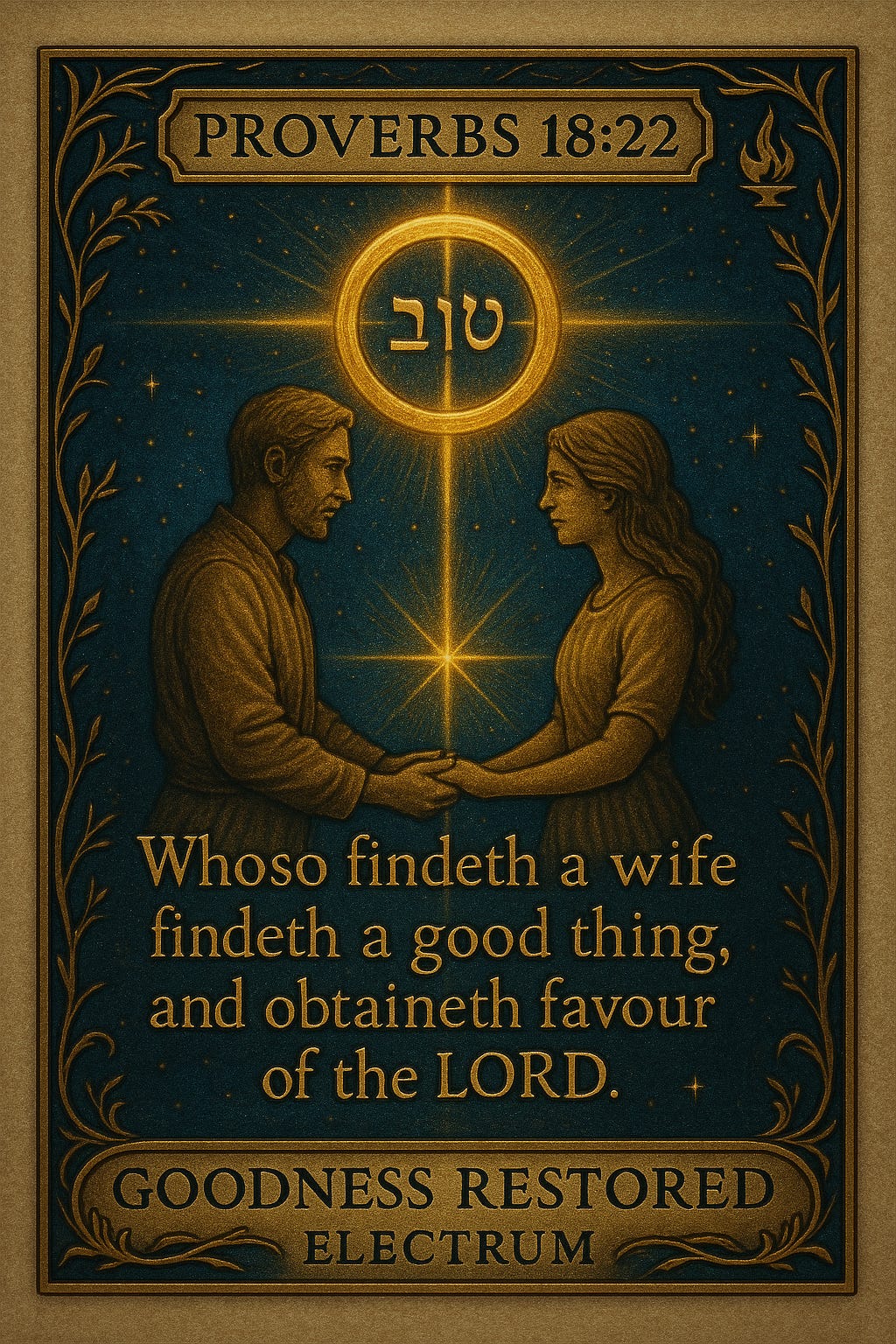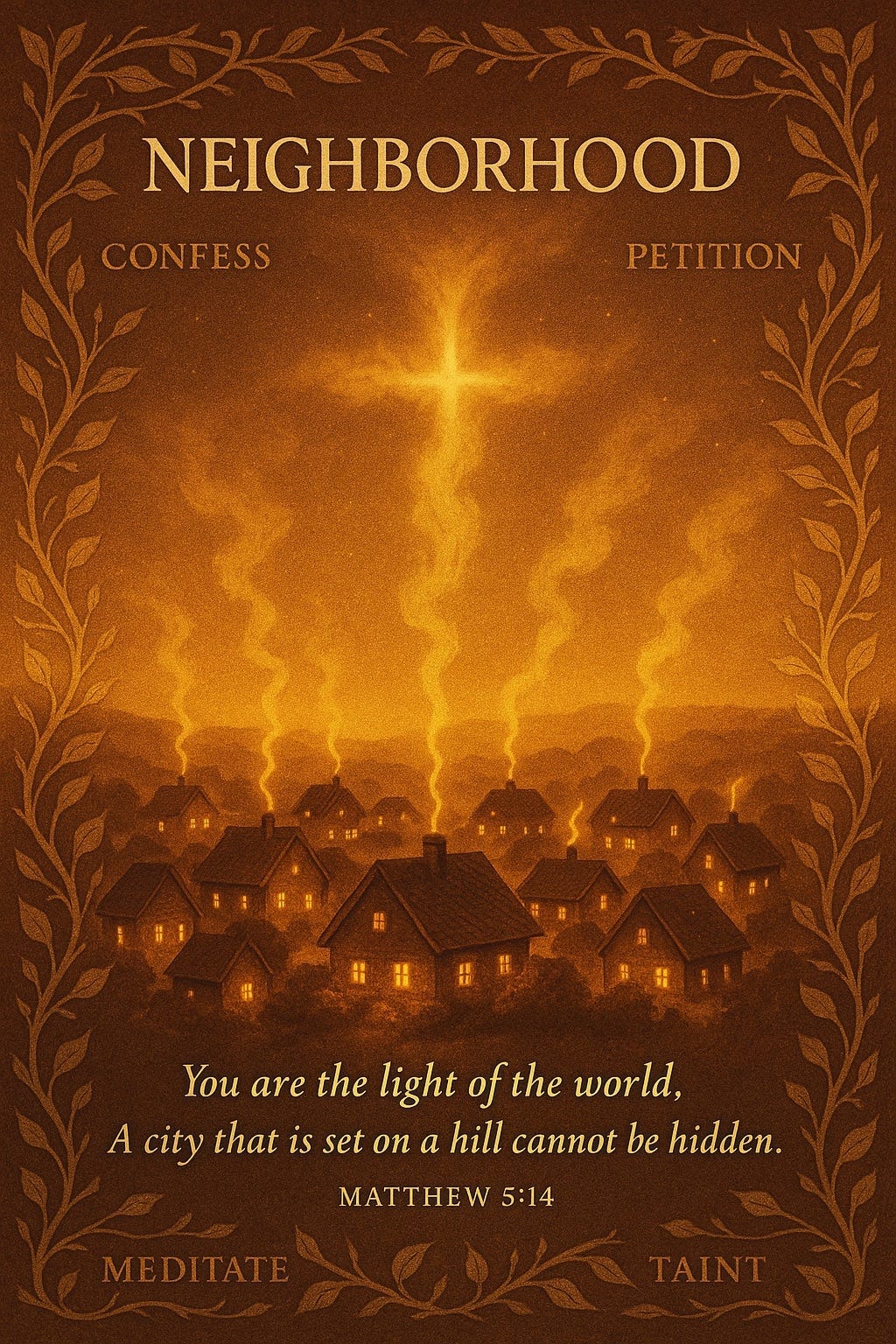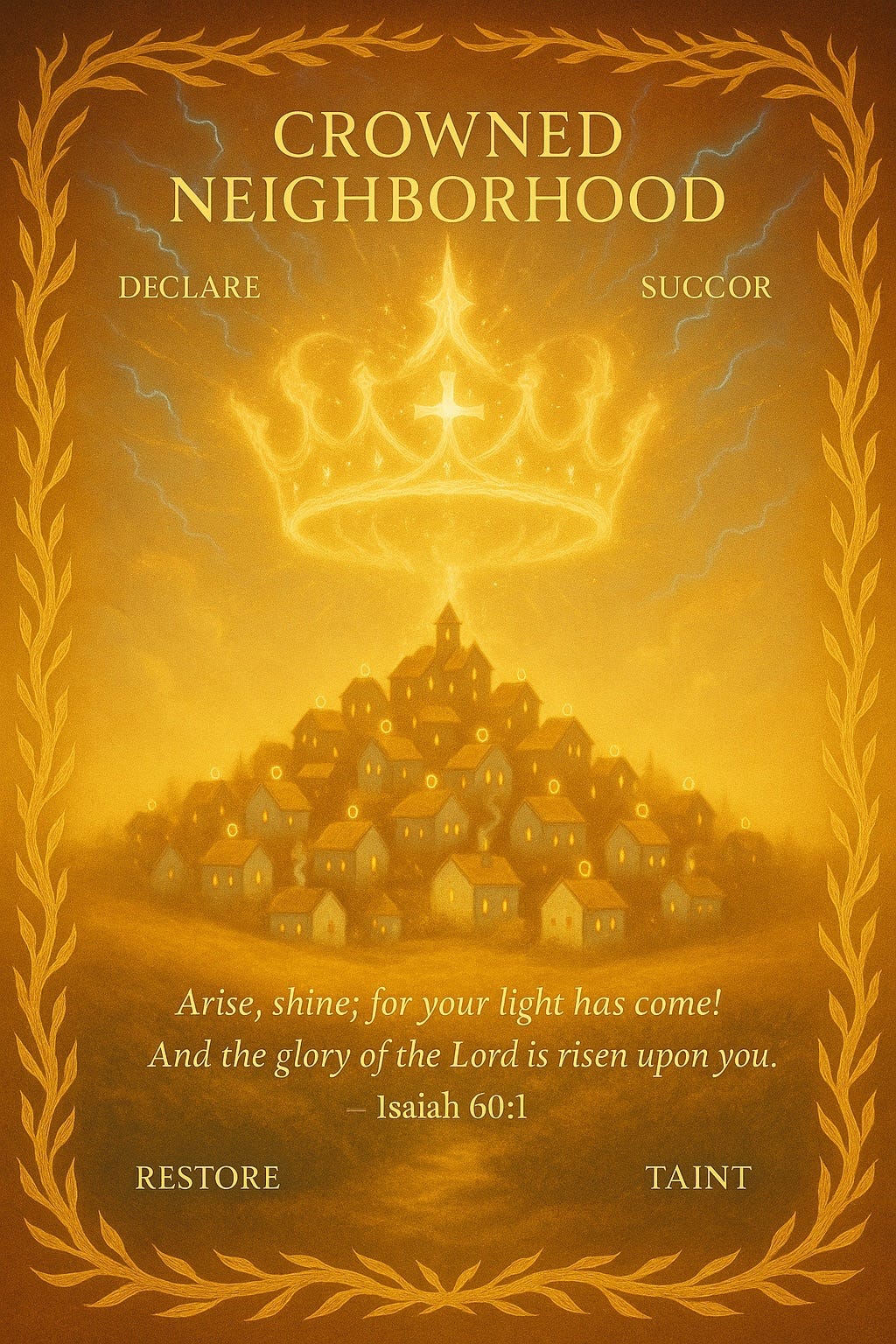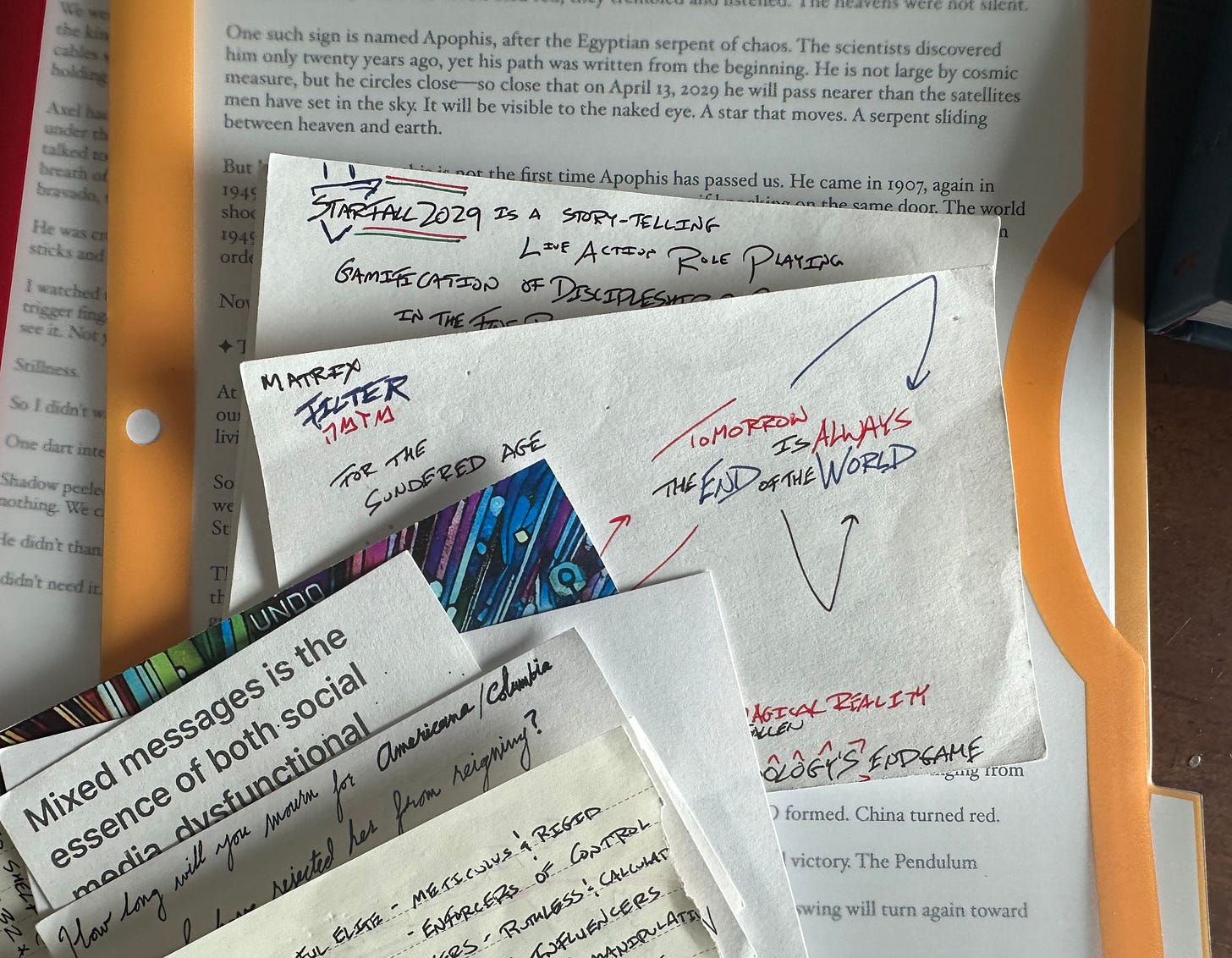The Marriage Covenant
Dominion as Covenant, Not Cop Out
Torah is Logos
The Law is not a ledger but a living rhythm, a covenantal pattern woven into creation itself. When Moses said, “You shall not cause the land to sin,” he did not legislate a petty statute; he gave voice to the truth that sin is cyclical dissonance in the created order. The land, the marriage, the body, and the soul all move by the same covenantal law of fidelity and fruitfulness.
Legalism mistakes the map for the terrain. It treats every precept as a negotiable contract—tit-for-tat, broken and remade by technicalities. But biblical law never functioned this way. The Torah’s heart is ontology, not bureaucracy:
Law exists because covenant exists, and covenant exists because God Himself is faithful.
Thus every “commandment” is a spoke on the wheel of faithfulness. When the prophets cried that adultery defiles the land or that unjust blood pollutes it, they spoke as guardians of harmony, not as clerks of punishment. They saw that when covenant fidelity is broken, the wound reverberates through soil and soul alike—the land bears guilt because creation itself is moral.
To reject legalism, then, is not to cast off the Law, but to remember its first form: Genesis 2, the man and his wife, naked and unashamed, bound by consent and covenant before their Maker. From that union flows every other law—each statute a restatement of the same truth: that faithfulness preserves life, and treachery consumes it.
Therefore, when Christ said that not one jot or tittle shall pass away, He confirmed what Moses taught—that the Law, rightly read, is wisdom embodied. Its meaning was never annulled, only fulfilled. The letter without the spirit kills; but the Spirit without the letter is shapeless.
Law and mercy are one pulse.
So the one who would walk in covenant must learn this balance:
• Reject the counting of sins as coin.
• Uphold the rhythm of fidelity as breath.
• Understand that breaking the Law is not technical but relational—it disrupts the cycle of faithfulness by which heaven and earth cohere.
The Law may be misunderstood and still well followed; but when it is broken, it is twisted.
Thus we do not serve the Law to be justified. We uphold it because it is just. Not to earn favor, but to walk in harmony with the faithful God whose covenant holds the stars. Every ordinance remains, because every ordinance is truth refracted through circumstance.
The Origin of Order
Before there was sin, there was order.
Before there was commandment, there was headship.
“Then the LORD God formed the man of dust from the ground… and He took one of his ribs and built the woman.” — Genesis 2:7, 22
The man was formed first and entrusted with dominion (radah) over the garden — to serve (avad) and to guard (shamar). The woman was built from him and for him, not as lesser clay but as living complement, drawn from his side that she might walk beside him.
Her origin reveals equality of essence, but distinction of role. The divine chain of command was clear from the beginning:
God → Man → Woman → Creation.
To invert this order is to dissolve the cosmos. To honor it is to dwell in peace.
Covenant as Dominion
When the two became one flesh, their unity was not a contract of equals, but an ordered harmony—a living reflection of heaven’s own hierarchy, where equality of being coexists with distinction of authority.
“Let them have dominion (רָדָה radah)…” — Genesis 1:26
“Therefore a man shall leave his father and mother and cling to his wife…” — Genesis 2:24
Dominion is not tyranny. It is right rule for the sake of life. The word’s Latin seed, dominus (lord, master), and domus (house), tell the same story: there can be no nation without domination rightly exercised; no house without a head; no peace without command.
Thus, the man’s headship in marriage is not an afterthought of patriarchy but the very architecture of creation. His command is covenantal, not coercive; lawful, not legalistic; disciplinary, not despotic.
“He shall not diminish her food, her clothing, or her marital rights.” — Exodus 21:10
“Any vow of a woman… her husband may establish, or her husband may make void.” — Numbers 30:13
These are not permissions of cruelty, but assignments of dominion — covenantal lordship under the higher Lord, where command and care are one act.
The Image of Yahweh and His Bride
Throughout Scripture, God identifies Himself as Husband, never as wife. Israel is the bride, the responder, the one who reflects His fidelity.
“For your Maker is your Husband.” — Isaiah 54:5
“I was a husband to them.” — Jeremiah 31:32
“I will betroth you to Me forever.” — Hosea 2:19–20
Here lies the holy asymmetry:
• Yahweh initiates, Israel answers.
• Yahweh commands, Israel obeys.
• Yahweh protects, Israel flourishes.
This pattern is the soul of marriage. To erase headship is to erase the mirror of the covenant itself. For the man stands as dominus of the home just as the Lord stands as Dominus of the world. The wife, in her faithfulness, crowns his dominion, glorifying what he guards.
“A virtuous woman is a crown to her husband.” — Proverbs 12:4
Her obedience is not humiliation; it is exaltation through order. Her submission gives shape to his word, just as creation gives body to the voice of God.
Law and Natural Order
The statutes of Torah assume this hierarchy because it is ontological. When a man and a woman join, they form the smallest unit of the Kingdom — a covenantal nation in seed form. The Law therefore governs their fidelity, inheritance, and purity not as ritual minutiae but as safeguards of divine architecture.
“Do not cause the land to sin.” — Deuteronomy 24:4
Sin here means disruption of covenantal order. When the cycle of dominion, obedience, and faithfulness is broken, the land itself is wounded. To “bring sin upon the land” is to normalize rebellion—turning covenant breach into custom. But to keep the order rightly is to sanctify the soil; to make the house and field alike reflect heaven’s peace.
The Positive Natural Law of Marriage
Marriage is the divinely witnessed covenant of dominion between one man and one woman, whereby the man bears headship as priest, protector, and lawgiver, and the woman answers as helper, glory, and crown.
Together they image the order of creation—Authority without tyranny, Submission without servility, Unity without confusion. Their union is sealed in flesh, ordered toward fruitfulness, and bound by fidelity that mirrors the steadfast love (ḥesed) of God.
Fulfillment, Not Abrogation
When Christ said, “Not one jot or tittle shall pass from the Law until all is fulfilled” (Matt 5:18), He was not discarding Torah’s structure but perfecting its heart. The Law stands not as chain but as chord—its melody heard fully only when played by love.
“The head of every man is Christ, the head of a woman is the man, and the head of Christ is God.” — 1 Corinthians 11:3
Thus the same chain of command that formed Eden governs the Church. Christ fulfills Adam; the Church fulfills Eve. Headship is not abolished in grace; it is transfigured into sacrificial rule.
Final Salvo: Against Legalism, For Law
The Law is not a tit-for-tat contract but a covenantal rhythm. Its wisdom is not in bureaucracy but in being itself. Every statute breathes from the same heart: fidelity, fruitfulness, and faith.
To follow Torah legalistically is to miss its melody; to reject it is to despise its Composer. Therefore we reject both antinomianism and scholastic tyranny. We uphold the Law because it is the architecture of peace. We keep its order not to earn favor, but to live in harmony with the faithful God whose dominion is love.
Marriage is the covenant of dominion: Instituted by God, governed by hierarchy, sanctified by faithfulness, fruitful by design, and prophetic of Christ and His Bride.
The man rules as dominus, the woman answers as glory, and their house becomes a living tabernacle of the Kingdom that cannot be shaken.








Amen, Brother! Love this. Thank you.
This was rich, Jonathan. Your framing of covenant as rhythm—not ledger—echoes everything we’re building through Iconic Marriages!